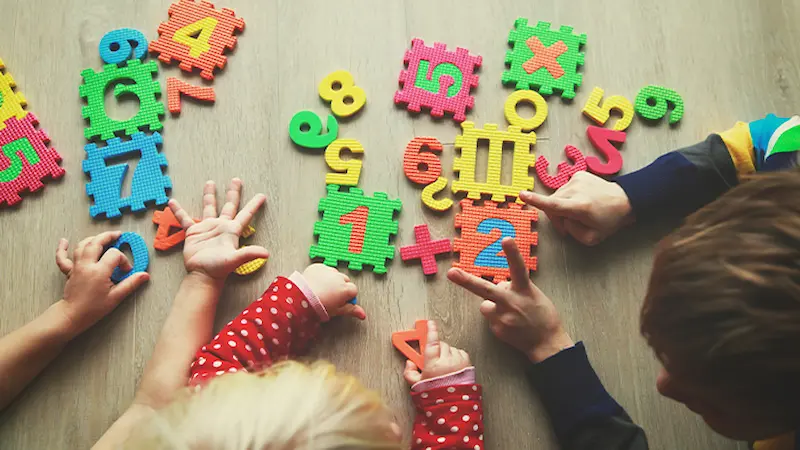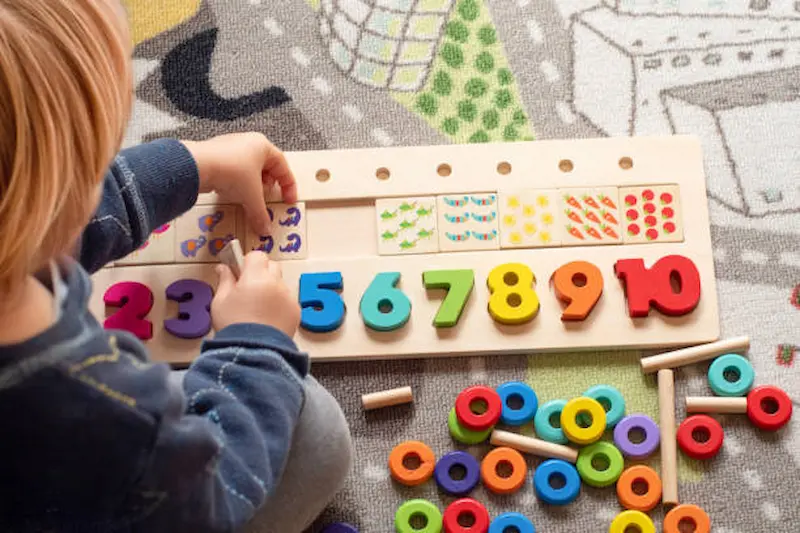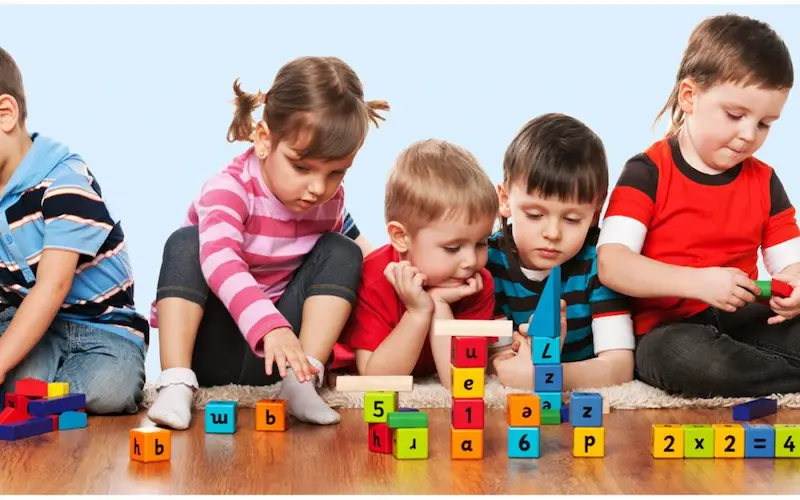Children at the age of 5 are vibrant, curious, and ready to absorb knowledge like sponges. As they embark on their educational journey, integrating fun into learning becomes pivotal. The concept of play-based learning takes center stage, harnessing the power of games to foster development. Acknowledging the significance of this developmental phase, educators and parents alike recognize the critical role of interactive and engaging activities in shaping a child’s foundational learning experiences.
Play is not merely a pastime but a potent tool for education. It seamlessly combines enjoyment with learning, providing a holistic approach to childhood development. Educational games tailored for 5-year-olds are instrumental in cultivating essential skills while keeping the learning process enjoyable. The immersive nature of play-based learning ensures that children are not just memorizing facts but actively engaging with the material, fostering a deeper understanding of concepts.
Table of contents
- Benefits of Educational Games
- Types of Educational Games
- Digital vs. Traditional Games
- Board Games, Puzzles, and Card Games
- Educational Apps and Software
- Selecting the Right Educational Games
- Educational Games for Literacy
- Math and Logic Games
- Art and Creativity Games
- Social and Emotional Learning
- Technology in Educational Games
- Family Engagement
- Gamification in Education
- The Future of Educational Games
- Conclusion
- Frequently Asked Questions (FAQ’S)
Benefits of Educational Games
Enhancing Cognitive Skills
Educational games for kids stimulate problem-solving, decision-making abilities and critical thinking skills for kids in young minds. They encourage exploration, improving memory retention and enhancing cognitive development. Moreover, these games create an environment where children can experiment, make mistakes, and learn from them, fostering resilience and adaptability.
Boosting Creativity and Imagination
Through games, children explore their creativity and imagination. Indoor activities for kids like drawing, storytelling, and crafts for kids in these games inspire innovation and artistic expression. These games act as a canvas for self-expression, enabling children to communicate their thoughts and emotions in imaginative ways.

Fostering Social and Emotional Development
Games instill valuable social skills such as cooperation, teamwork, and communication. Moreover, they aid in emotional development by teaching empathy, patience, and conflict resolution in a safe, playful environment. The collaborative nature of many educational games helps children understand the importance of working together towards a common goal, laying the groundwork for healthy social interactions.
Types of Educational Games
Digital vs. Traditional Games
While digital games offer interactive experiences, traditional board games, puzzles, and card games promote tactile learning and family bonding. Both digital and traditional games hold unique benefits; digital games often cater to a tech-savvy generation, while traditional games offer a tangible, hands-on learning experience that fosters face-to-face interaction among peers and family members.
Board Games, Puzzles, and Card Games
These classics enhance problem-solving skills, strategic thinking, and patience, making them ideal for developing young minds. Additionally, board games often have multiple layers of learning, teaching children not just the rules but also sportsmanship, turn-taking, and the joy of both winning and losing graciously.
Educational Apps and Software
Technology-integrated games offer diverse learning opportunities, catering to different learning strategies and preferences. These apps and software often adapt to a child’s learning pace, providing personalized challenges that encourage growth and skill development.
Selecting the Right Educational Games
Age-Appropriate Options
Choosing games aligned with a 5-year-old’s developmental stage ensures engagement and relevance. It’s crucial to consider not just the complexity of the game but also its themes, ensuring they are suitable and stimulating for the child’s age group.
Learning Objectives and Skills
Look for games that target specific skills like literacy, numeracy, creativity, and social interaction. By aligning these objectives with the child’s interests, parents and educators can ensure that learning feels less like a chore and more like an exciting exploration.
Safety and Quality Standards
Prioritize games that adhere to safety standards, providing a secure and enriching experience for young players. Ensuring that the content is age-appropriate and free from harmful elements is essential in creating a safe and conducive learning environment for children.
Educational Games for Literacy
Reading Adventures and Story Games
Engaging story-driven games introduce children to narratives and develop their love for reading. These games not only focus on the text but also integrate visuals and sound, captivating young readers’ attention and fostering a deeper connection with storytelling.
Phonics and Spelling Fun
Games focusing on phonetics and spelling lay a strong foundation for language skills. By incorporating interactive elements like rhymes and word puzzles, these games make learning phonics enjoyable and memorable.
Writing and Journaling Games
Encourage creativity and language expression through writing-based games. These games provide prompts and exercises that stimulate imagination, empowering children to express themselves through words and illustrations.

Math and Logic Games
Number Challenges and Counting Games
Games involving numbers and counting enhance mathematical proficiency. Through engaging activities like counting objects, solving number puzzles, and recognizing patterns, children develop a strong numerical foundation while having fun.
Problem-Solving and Puzzle Adventures
Logical puzzles stimulate problem-solving abilities and critical thinking skills for kids. These games present challenges that require strategic planning and analytical reasoning, encouraging children to approach problems methodically and creatively.
Building a Foundation in Mathematics
Games that introduce mathematical concepts in an enjoyable manner pave the way for a strong mathematical base. By integrating math into games seamlessly, children can grasp abstract concepts such as addition, subtraction, and shapes more intuitively.
Art and Creativity Games
Drawing and Painting Adventures
Games involving art nurture creativity and self-expression. They provide a virtual canvas for children to experiment with colors, shapes, and textures, fostering an appreciation for artistic expression.
Encourage innovative thinking and craftsmanship through creative design and crafting games. These activities promote hands-on learning and spatial awareness, allowing children to transform their ideas into tangible creations.
Unleashing the Inner Artist
Activities promoting artistic exploration allow children to express themselves freely. By providing tools and challenges that encourage experimentation, these games empower children to discover and develop their unique artistic styles.
Social and Emotional Learning
Cooperative Games
Games emphasizing teamwork and collaboration develop social skills. By working towards shared goals and navigating challenges together, children learn to communicate effectively and respect diverse perspectives.
Emotional Intelligence and Empathy Building
Games that address emotions and empathy aid in emotional intelligence development. They teach children to recognize and manage their emotions while understanding the feelings of others, fostering empathy and compassion.
Conflict Resolution in Play
Interactive scenarios in games teach children how to resolve conflicts peacefully. By simulating real-life situations, these games equip children with problem-solving skills and strategies to handle conflicts constructively.
Technology in Educational Games
The Role of Tablets and Computers
Modern education system in a transition phase. Technology offers interactive learning experiences but should be balanced with other activities. While digital platforms provide access to a vast array of educational content, it’s crucial to ensure a healthy balance between screen time and offline activities to support a child’s overall development.
Augmented Reality and Virtual Reality
Innovative technologies provide immersive educational experiences for enhanced learning. Augmented reality (AR) and virtual reality (VR) games create captivating learning environments, allowing children to explore concepts in a more tangible and engaging manner.
Balancing Screen Time
Maintaining a healthy balance between screen time and other activities is crucial for a child’s overall development. Parents and educators should monitor and manage screen time to ensure that children engage in a diverse range of activities, promoting physical, social, and cognitive development.
Family Engagement
Playing Together as a Family
Involving the whole family in educational games strengthens bonds and creates memorable experiences. Family game nights not only encourage learning but also create opportunities for laughter, shared achievements, and valuable bonding time.
Involving Parents in Educational Play
Parents’ involvement fosters a supportive learning environment and encourages continuous engagement. By participating in educational games with their children, parents can actively contribute to their child’s learning journey and strengthen the parent-child relationship.
Building Strong Bonds
Shared experiences through gaming create lasting family connections and joyful memories. These moments not only enhance familial relationships but also create a positive association with learning, making education an enjoyable and integral part of family life.
Gamification in Education
Learning through Game Mechanics
Incorporating game elements in education makes learning more engaging and enjoyable. By integrating features like challenges, rewards, and progression systems, educational content becomes more interactive and motivates children to actively participate in their learning process.
Gamified Classrooms and Curriculum
Educators leverage gamification to enhance classroom engagement and learning outcomes. By gamifying lesson plans and educational activities, teachers create a dynamic learning environment that captivates students’ attention and encourages active participation.
Measuring Educational Outcomes
Assessing progress through gamified methods helps track learning achievements effectively. By using metrics and feedback loops embedded in educational games, educators can tailor learning experiences to address individual needs and monitor overall progress.
The Future of Educational Games
Technological Advancements and Trends
Advancements like AI, immersive technologies, and adaptive learning are shaping the future of educational games. Artificial intelligence enables personalized learning experiences, while immersive technologies like augmented reality and virtual reality revolutionize how children interact and learn from digital content.
Global Perspectives on Educational Gaming
Different cultures and regions embrace unique approaches to educational gaming, contributing to diverse perspectives. By incorporating cultural elements and diverse content, educational games can cater to a wider audience, fostering inclusivity and global awareness among young learners.
Innovations on the Horizon
Continual innovations promise more interactive, tailored, and effective educational gaming experiences. From AI-driven adaptive learning systems to collaborative online platforms, ongoing developments aim to make learning more accessible, engaging, and impactful for children worldwide.
Conclusion
Educational games for 5-year-olds seamlessly blend fun with learning, offering a myriad of benefits crucial for their holistic development. By choosing age-appropriate, engaging, and purposeful games, we can empower young minds to learn, grow, and thrive in an enjoyable learning environment. Embrace the power of educational games — it’s a smart choice for nurturing the bright minds of tomorrow. As technology advances and educational methodologies evolve, integrating innovative approaches to educational gaming will continue to play a pivotal role in shaping the educational landscape for young learners.
To get your hands on more educational and free resources on coding for kids, robotics for kids, financial education for kids, etc., do check out the BrightCHAMPS Page now!
Frequently Asked Questions (FAQ’S)
A1. There are several excellent educational games suitable for 5-year-olds that promote learning while being engaging and fun. Some popular choices include “ABCmouse,” “Toca Boca” series, “Endless Alphabet,” “Sago Mini,” and “PBS Kids Games.” These games focus on various skills such as literacy, numeracy, problem-solving, creativity, and critical thinking, tailored specifically to the developmental stage of a 5-year-old.
A2. For young children, including 5-year-olds, the American Academy of Pediatrics recommends limiting screen time to about 1 hour per day of high-quality programming. This includes educational content that is interactive, engaging, and appropriate for their age. However, it’s essential to balance screen time with other activities like physical play, social interactions, reading, and creative pursuits to support overall development.
A3. Educational games can be valuable supplements to traditional schooling by reinforcing learning concepts in a more interactive and engaging manner. However, they generally cannot entirely replace the holistic approach of traditional schooling. Traditional schooling encompasses various elements like social interaction, hands-on activities, teacher-guided learning, and diverse educational experiences, which are crucial for a child’s overall growth and development.
A4. Yes, there are educational games specifically designed to promote multilingualism among children. Apps like “Duolingo for Kids,” “Gus on the Go,” “MindSnacks,” and “Little Pim” offer games and activities tailored to help kids learn different languages in a playful and interactive way. These games often use visuals, repetition, and gamification techniques to make language learning enjoyable and effective.
A5. Parents can monitor and limit screen time effectively by setting clear rules and guidelines. Some strategies include:
Establishing designated screen time hours.
Using parental control features available on devices to set time limits and content restrictions.
Actively engaging with children during screen time, discussing what they are learning or playing.
Encouraging a variety of activities beyond screens, such as outdoor play, reading, hobbies, and family interactions.
Being good role models by managing their screen time and demonstrating a healthy balance between digital and non-digital activities.


 We are an army of educators and passionate learners from BrightChamps family, committed to providing free learning resources to kids, parents & students.
We are an army of educators and passionate learners from BrightChamps family, committed to providing free learning resources to kids, parents & students.












